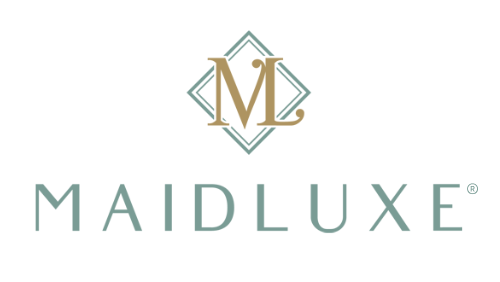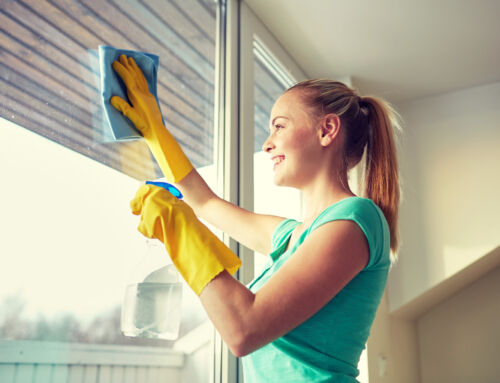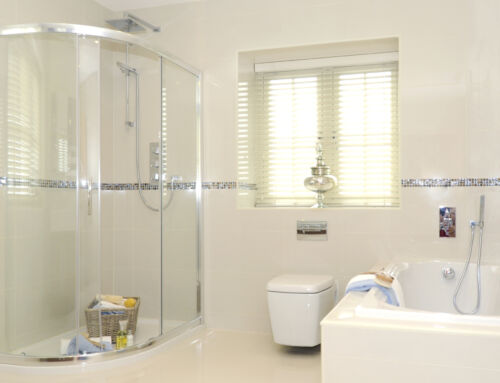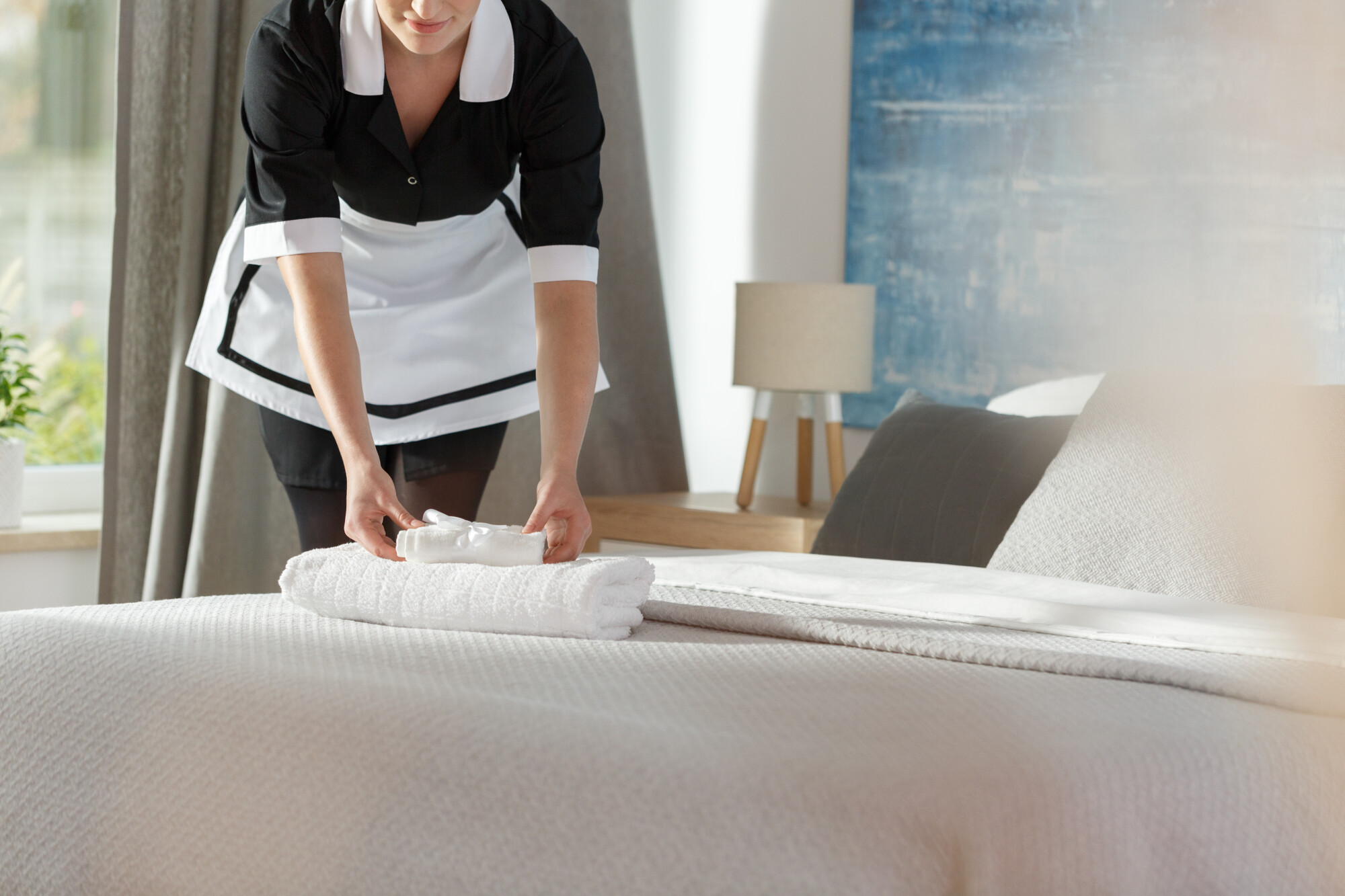
Sparkling Secrets: Cleaning Tips for New Homeowners
Congratulations on becoming a new homeowner! This exciting milestone marks the beginning of a new chapter in your life. As you settle into your new home, establishing effective cleaning routines will be crucial in maintaining a clean and well-organized living space. To assist you in this endeavor, here are some essential cleaning tips and advice that will help you keep your property pristine!
Create a Cleaning Schedule:
Developing a weekly or monthly cleaning schedule that suits your needs is an excellent way to ensure that your home remains clean and organized. By breaking down tasks into manageable chunks and allocating specific days or time slots for each task, you can establish a routine that works for you. Here’s a more detailed explanation of how you can create an effective cleaning schedule:
Assess Your Cleaning Needs:
Start by assessing the specific cleaning needs of your home. Take into consideration the size of your living space, the number of rooms, and any areas that require special attention. This assessment will help you determine how much time you need to allocate for cleaning each week or month.
Determine the Frequency of Tasks:
Identify tasks that need to be done daily, weekly, and monthly. Daily tasks might include quick tidying up, wiping down surfaces, and doing the dishes. Weekly tasks could involve vacuuming, mopping floors, and cleaning bathrooms. Monthly tasks may include deep cleaning tasks like washing windows, dusting ceiling fans, or cleaning appliances.
Divide Tasks into Categories:
Categorize your cleaning tasks based on the areas of your home or specific tasks involved. For example, you can categorize tasks into kitchen cleaning, bathroom cleaning, living areas, bedrooms, and outdoor cleaning if applicable. This breakdown will help you allocate time for each category during your cleaning schedule.
Allocate Time Slots:
Determine which days of the week or month you will dedicate to specific cleaning tasks. Consider your personal schedule and preferences when making these decisions. For example, you may choose to clean the kitchen on Mondays, tackle the bathrooms on Tuesdays, and focus on the living areas on Wednesdays. Alternatively, you could dedicate certain time slots each day to tackle specific tasks.
Be Realistic with Time Estimates:
Estimate the time required for each task or category realistically. Consider factors such as the size of the area, the complexity of the task, and any additional steps involved. Overestimating or underestimating the time needed for each task can lead to frustration or incomplete cleaning sessions.
Create a Cleaning Checklist:
Once you have determined the frequency, categories, and time slots for each task, create a cleaning checklist. This checklist will serve as a visual guide and help you stay organized. List out all the tasks that need to be done and the days or time slots allocated for each task. You can create a physical checklist or use a digital tool or app to keep track of your cleaning schedule.
Flexibility and Adjustments:
Remember that your cleaning schedule should be flexible and adaptable to your needs. Life can be unpredictable, and there may be days when you can’t follow the schedule exactly as planned. Allow room for adjustments and be open to rescheduling tasks if needed. The goal is to create a cleaning routine that works for you and helps maintain the cleanliness of your home consistently.
Share Responsibilities:
If you live with other family members or have roommates, consider involving them in the cleaning schedule. Share responsibilities and allocate tasks to each person, taking into account their preferences and availability. By distributing tasks among household members, you can make cleaning a collaborative effort and lighten the workload for everyone.
Evaluate and Refine:
Regularly evaluate the effectiveness of your cleaning schedule. Reflect on whether the allocated time slots and frequency of tasks are working well for you. Identify any areas where adjustments or improvements can be made. Over time, you may find that certain tasks require more or less time, or that the schedule needs to be tweaked to accommodate changes in your lifestyle or living situation.
By developing a weekly or monthly cleaning schedule that breaks down tasks into manageable chunks and allocating specific days or time slots for each task, you can establish a routine that suits your needs. This will help you maintain a clean and organized home without feeling overwhelmed by the cleaning process.
Gather Cleaning Supplies:
Stocking up on essential cleaning supplies is a crucial step in ensuring that you have everything you need to maintain a clean and tidy home. Having these items readily available will not only make cleaning more convenient but also help you tackle various cleaning tasks efficiently. Here’s an expanded explanation of some essential cleaning supplies you should consider:
All-Purpose Cleaner:
An all-purpose cleaner is a versatile cleaning solution that can be used on various surfaces, including countertops, sinks, appliances, and bathroom fixtures. Look for a cleaner that is effective against dirt, grime, and common household stains. Having an all-purpose cleaner on hand allows you to quickly and effectively clean multiple areas of your home.
Microfiber Cloths:
Microfiber cloths are highly effective for dusting and cleaning surfaces. They are designed to attract and trap dust, dirt, and debris, making them an excellent alternative to disposable paper towels. Microfiber cloths are reusable, durable, and can be used both wet and dry. They are gentle on surfaces and leave no streaks or lint behind, making them ideal for cleaning glass, mirrors, and electronics.
Sponges:
Sponges are versatile cleaning tools that can be used for a variety of purposes. They are particularly useful for washing dishes, wiping down countertops, and cleaning surfaces in the bathroom. Choose sponges with a scrubbing side for tackling tougher stains or stuck-on residue. Remember to replace sponges regularly to maintain cleanliness and prevent the buildup of bacteria.
Vacuum Cleaner:
A vacuum cleaner is essential for keeping your floors clean and free from dust, dirt, and allergens. Opt for a vacuum cleaner that suits the flooring in your home, whether it’s carpeted, hardwood, or a combination of both. Look for features such as adjustable height settings, attachments for different surfaces, and strong suction power. Regular vacuuming helps maintain the appearance of your floors and contributes to a healthier indoor environment.
Mop:
A mop is essential for keeping hard floors, such as tile, laminate, or vinyl, clean and shiny. There are various types of mops available, including traditional string mops, sponge mops, and microfiber mops. Consider choosing a mop that is easy to maneuver and has a removable and washable mop head for convenience. Mops are effective for removing dirt and spills from floors, helping to maintain their cleanliness and extend their lifespan.
Broom:
A broom is a basic yet essential cleaning tool for sweeping away loose debris, dust, and dirt from floors. It’s particularly useful for hard floors and areas where a vacuum cleaner might not be suitable. Look for a broom with sturdy bristles that can effectively capture dirt and debris. Having a broom allows you to quickly tidy up before vacuuming or mopping.
Additional Supplies:
Depending on your specific cleaning needs, consider stocking up on additional supplies such as a dustpan, a bucket, scrub brushes for tough stains, a window cleaner for streak-free glass, a toilet brush for bathroom cleaning, and gloves to protect your hands while cleaning.
Remember to store your cleaning supplies in a designated area that is easily accessible and well-organized. This will ensure that you can quickly locate and use the necessary tools when it’s time to clean. Regularly check your supply levels and replenish as needed to avoid running out of essential cleaning items. By stocking up on essential cleaning supplies such as all-purpose cleaners, microfiber cloths, sponges, a vacuum cleaner, a mop, and a broom, you’ll be well-equipped to tackle a wide range of cleaning tasks efficiently and maintain a clean and organized home.
Tackle One Room at a Time:
When it comes to cleaning your home, taking on the entire house all at once can feel like an overwhelming and daunting task. To make the cleaning process more manageable and efficient, a highly effective approach is to focus on one room at a time. By breaking down your cleaning tasks and directing your efforts to a single room, you can clean more efficiently and avoid feeling overwhelmed. Here’s an expanded explanation of the benefits and strategies of this approach:
Efficient Use of Time and Energy:
Cleaning one room at a time allows you to concentrate your time and energy on a specific area. Instead of spreading yourself thin across multiple rooms, you can allocate your efforts to thoroughly clean and organize one space before moving on to the next. This targeted approach ensures that each room receives the attention it deserves, resulting in a more thorough and efficient cleaning process.
Clear and Defined Progress:
Focusing on one room at a time provides a clear sense of progress and accomplishment. As you complete each room, you can visually see the difference in cleanliness and organization, which can be motivating and satisfying. This incremental progress helps to maintain momentum and encourages you to continue tackling the remaining rooms with enthusiasm.
Reduced Feeling of Overwhelm:
Cleaning an entire house all at once can be overwhelming, especially if you have a large or multi-level home. By concentrating on one room at a time, you can avoid the sense of being overwhelmed by the sheer scope of the cleaning task. Breaking it down into smaller, manageable chunks makes it easier to stay motivated and focused on the task at hand.
Customized Approach for Each Room:
Different rooms in your home have varying cleaning needs and challenges. By focusing on one room at a time, you can tailor your cleaning approach to the specific requirements of each space. For example, the kitchen may need more attention for cleaning appliances and surfaces, while the living room may require more focus on dusting and vacuuming. This targeted approach ensures that you address the unique cleaning needs of each room effectively.
Prioritization of High-Traffic Areas:
When you clean one room at a time, you can prioritize high-traffic areas that tend to accumulate dirt and clutter more quickly. These areas, such as entryways, kitchens, and bathrooms, may require more frequent attention. By tackling them first, you can maintain cleanliness in the spaces that are most visible and frequently used.
Enhanced Focus and Attention to Detail:
Cleaning one room at a time allows you to give your full attention to the task at hand. Without the distractions of moving between rooms, you can focus on details, ensuring that no surface or corner is overlooked. This focused approach promotes a more thorough cleaning routine, resulting in a cleaner and more organized home overall.
Maintenance of Cleaning Standards:
By focusing on one room at a time, you can establish a cleaning standard that you can consistently maintain throughout your home. Once you establish a routine and level of cleanliness in one room, you can strive to achieve the same standard in subsequent rooms. This systematic approach ensures that your entire home remains consistently clean and organized.
To implement this strategy effectively, start by selecting a specific room to clean. Break down the cleaning tasks within that room into manageable steps, such as decluttering, dusting, vacuuming, wiping surfaces, and organizing. Complete each step before moving on to the next. This systematic approach ensures that you give proper attention to every aspect of cleaning within that room. Remember to adapt the approach based on your schedule and energy levels. You can choose to clean one room per day, dedicate specific days of the week to particular rooms, or allocate focused time slots for each room over a weekend. The key is to find a rhythm and routine that works best for you. By focusing on one room at a time during your cleaning sessions, you can clean more efficiently, reduce overwhelm, and achieve a consistently clean and organized home. Embrace this approach, and you’ll find that cleaning becomes a more manageable and rewarding task.
Declutter Regularly:
Regularly decluttering your home is an essential practice that not only helps create a more organized living space but also makes cleaning more manageable. By consistently removing items you no longer need or use and finding designated places for everything, you can prevent clutter buildup and streamline your cleaning routine. Here’s an expanded explanation of the benefits and strategies for regular decluttering:
Streamlined Cleaning Process:
Clutter can impede the cleaning process by making it more time-consuming and challenging to access surfaces and areas that need cleaning. By regularly decluttering, you eliminate unnecessary items and create a cleaner and more open space. With fewer items to maneuver around, your cleaning tasks become more efficient and less frustrating.
Improved Focus on Cleaning:
When you declutter, you create a more focused environment for cleaning. Removing excess items allows you to concentrate on the specific cleaning tasks at hand without distractions. This increased focus allows you to clean more thoroughly and with better attention to detail.
Enhanced Visual Appeal:
Clutter can make a space appear messy and disorganized, even if it is relatively clean. By decluttering, you create a visually pleasing environment that promotes a sense of calm and order. A clean and clutter-free space is not only more appealing to the eye but also contributes to a more peaceful and relaxing atmosphere in your home.
Reduced Stress and Overwhelm:
Clutter can contribute to feelings of stress and overwhelm. The presence of excessive items can create a sense of visual and mental clutter, which can be mentally draining. Regular decluttering helps to alleviate these feelings by creating a more organized and tranquil living environment.
Efficient Use of Space:
Decluttering allows you to make better use of your available space. By removing unnecessary items, you free up valuable storage areas and create room for the things that truly matter to you. This efficient use of space makes it easier to find items when you need them and reduces the likelihood of clutter accumulation in the future.
Simplified Decision-Making:
Regularly decluttering requires you to make decisions about what items to keep and what to let go of. This process can help you develop decision-making skills and cultivate a mindset of intentional living. Over time, you become more adept at evaluating the value and usefulness of your possessions, leading to more mindful consumption and a less cluttered home.
Establishing Systems and Designated Places:
Decluttering provides an opportunity to establish systems and designated places for your belongings. By finding a home for each item, you create a logical and organized layout that makes it easier to maintain tidiness. When everything has its place, it becomes simpler to put things away and prevent clutter from accumulating in the first place.
Donating and Recycling:
Regular decluttering allows you to be mindful of items that are still in good condition but no longer serve a purpose for you. Consider donating these items to charitable organizations or giving them to friends or family who may find value in them. Additionally, recycling or properly disposing of items that can’t be reused helps reduce waste and supports environmental sustainability.
To incorporate regular decluttering into your cleaning routine, consider the following strategies:
- Set aside dedicated time: Schedule regular decluttering sessions in your calendar. It could be a specific day of the month or a few hours each week. Consistency is key.
- Break it down: Focus on decluttering one area or category at a time to prevent feeling overwhelmed. For example, start with a single drawer, a closet shelf, or a specific room.
- Sort items into categories: Create categories for items you want to keep, donate, sell, or discard. This sorting process helps you make decisions more efficiently and ensures items find their proper place.
- Ask yourself questions: When deciding whether to keep or let go of an item, ask yourself if it serves a purpose, if you truly need it, or if it brings you joy. Be honest with yourself and prioritize what truly matters to you.
- Create designated storage: Once you’ve decluttered, establish designated storage areas for your belongings. Use storage bins, shelves, and organizers to maintain an organized system.
Remember, regular decluttering is an ongoing process. By consistently evaluating your belongings and removing what no longer serves you, you can enjoy a cleaner, more organized, and easier-to-maintain home environment.
Establish a Daily Cleaning Routine:
Developing a quick daily cleaning routine is an effective strategy to maintain the cleanliness and tidiness of high-traffic areas in your home. By dedicating a small portion of your day to addressing specific tasks, such as wiping down countertops, doing a quick sweep, and tidying up clutter, you can prevent messes from accumulating and reduce the need for frequent deep cleaning sessions. Here’s an expanded explanation of the benefits and strategies for developing a quick daily cleaning routine:
Time Efficiency:
A quick daily cleaning routine allows you to address cleaning tasks in a time-efficient manner. By focusing on specific areas and tasks, you can complete your cleaning routine swiftly, often in just a few minutes. This efficiency makes it easier to incorporate cleaning into your daily schedule without feeling overwhelmed or sacrificing valuable time for other activities.
Preventing Accumulation of Mess:
Daily cleaning of high-traffic areas helps prevent the accumulation of dirt, dust, and clutter. Regularly wiping down countertops, doing a quick sweep, and tidying up clutter prevent these areas from becoming breeding grounds for bacteria or attracting pests. This proactive approach ensures that your home remains clean, presentable, and inviting throughout the day.
Maintaining Clean and Inviting Spaces:
High-traffic areas, such as the kitchen, living room, and entryway, are often the first areas guests see when entering your home. By keeping these areas clean on a daily basis, you create a positive first impression and maintain a sense of cleanliness and order. This contributes to a welcoming atmosphere and makes it easier to entertain guests without the need for last-minute cleaning.
Simplifying Deep Cleaning:
Regular daily cleaning helps reduce the need for frequent deep cleaning sessions. By consistently addressing minor messes and maintaining cleanliness, you can prolong the intervals between more extensive cleaning tasks. This saves you time and energy in the long run, as deep cleaning sessions become less time-consuming and labor-intensive.
Stress Reduction:
A clean and organized environment has a positive impact on mental well-being. Engaging in a quick daily cleaning routine can help reduce stress and promote a sense of calm and control over your living space. Knowing that high-traffic areas are consistently maintained gives you peace of mind and contributes to a more relaxed and enjoyable home environment.
To develop a quick daily cleaning routine, consider the following strategies:
- Identify High-Traffic Areas: Determine the high-traffic areas in your home that require daily attention. This may include the kitchen, living room, entryway, or any other space that experiences frequent use and tends to accumulate messes quickly.
- Prioritize Tasks: Identify the specific tasks that need to be done daily in these areas. Examples include wiping down countertops, quickly sweeping or vacuuming floors, and tidying up clutter such as shoes, mail, or toys.
- Allocate Time: Determine the best time of day to complete your quick cleaning routine. It could be in the morning before leaving for work, during a break, or in the evening before winding down for the day. Choose a time that works best for your schedule and allows you to give proper attention to the tasks at hand.
- Make it a Habit: Consistency is key when it comes to maintaining a daily cleaning routine. Commit to making it a habit by setting reminders, creating a checklist, or incorporating it into your existing daily routine. Over time, it will become second nature, and you’ll reap the benefits of a consistently clean and organized home.
- Get the Whole Family Involved: Encourage other household members to participate in the daily cleaning routine. Assign specific tasks to each family member to share the responsibility and make the process more efficient. This promotes a sense of teamwork and instills good cleaning habits in everyone.
- Adjust as Needed: Be flexible with your daily cleaning routine and adjust it based on changing circumstances or personal preferences. As your needs evolve or your schedule shifts, be willing to adapt the routine accordingly to ensure it remains manageable and effective.
By implementing a quick daily cleaning routine focused on high-traffic areas, you can maintain cleanliness, prevent messes from accumulating, and enjoy a consistently clean and inviting home. Embrace this habit, and you’ll find that it significantly contributes to a more organized and stress-free living environment.
Use Proper Cleaning Techniques:
Learning the appropriate cleaning techniques for different surfaces in your home is essential for maintaining their condition and preventing damage. By using the right tools and cleaners and following proper cleaning methods, you can effectively clean various surfaces without causing harm. Here’s an expanded explanation of the importance and strategies for learning appropriate cleaning techniques:
- Protecting Delicate Surfaces: Delicate surfaces, such as glass, mirrors, and certain types of countertops or furniture, require gentle cleaning techniques to avoid scratches, streaks, or damage. Using the appropriate tools and cleaners ensures that these surfaces remain clean and well-maintained.
- Microfiber Cloths: Microfiber cloths are an excellent choice for cleaning delicate surfaces. The fine fibers in microfiber cloths attract and trap dust and dirt without scratching the surface. They are particularly effective for cleaning glass, mirrors, and electronic screens. When using microfiber cloths, make sure they are clean and free from debris to prevent transferring particles onto the surface being cleaned.
- Gentle Cleaners: When cleaning delicate surfaces, choose gentle cleaners that are specifically designed for the material or surface. Avoid harsh chemicals or abrasive cleaners that can cause discoloration, etching, or damage. Look for products labeled as suitable for delicate surfaces, or opt for homemade solutions like vinegar and water for glass or mild soap and warm water for wood or painted surfaces.
- Test in an Inconspicuous Area: If you are unsure about the compatibility of a cleaner or technique with a specific surface, it’s best to test it in an inconspicuous area first. This allows you to observe any potential adverse effects before proceeding with cleaning the entire surface. If the test area shows no negative reaction, you can proceed with confidence.
- Avoid Abrasive Materials: Avoid using abrasive materials, such as steel wool, harsh scrub brushes, or scouring pads, on delicate surfaces. These can cause scratches, scuffs, or remove finishes. Instead, opt for soft cloths, non-abrasive sponges, or gentle scrub brushes specifically designed for delicate surfaces when more thorough cleaning is required.
- Follow Manufacturer’s Recommendations: Different surfaces may come with specific cleaning recommendations from the manufacturer. These instructions often provide guidance on suitable cleaners, techniques, and any precautions to take. It’s important to read and follow these instructions to ensure that you are cleaning the surfaces correctly and maintaining any warranties.
- Educate Yourself: Take the time to educate yourself on proper cleaning techniques for different surfaces. You can find information through manufacturer websites, product labels, online tutorials, or professional cleaning resources. Understanding the specific requirements of each surface empowers you to clean effectively and protect the longevity and appearance of your home’s materials.
- Seek Professional Advice: If you are uncertain about how to clean a particular surface or have concerns about potential damage, it’s wise to seek professional advice. Professionals in specific fields, such as furniture, flooring, or appliances, can provide expert guidance on the appropriate cleaning methods and products to use.
Remember that different surfaces may have unique cleaning considerations, so it’s important to approach each with care and follow the appropriate techniques. By learning the appropriate cleaning techniques for different surfaces in your home, you can effectively clean and maintain their condition, ensuring they remain beautiful and functional for years to come.
Pay Attention to Hard-to-Reach Areas:
When it comes to cleaning, it’s important not to overlook areas that are easily forgotten but can accumulate dust and grime over time. Regularly cleaning these spots is crucial for maintaining overall cleanliness and preventing the buildup of dirt and allergens in your home. Here’s an expanded explanation of why you shouldn’t overlook these areas and some strategies for cleaning them effectively:
Ceiling Fans:
Ceiling fans can accumulate a significant amount of dust on the blades and in the crevices. When the fan is turned on, the dust can circulate in the air, affecting the air quality in your home. To clean ceiling fans, use a long-handled duster or a microfiber cloth to gently wipe down the blades. You can also place an old pillowcase over the blade and slide it off to collect the dust. Make sure to clean both sides of the blades and repeat this task regularly to keep them dust-free.
Baseboards:
Baseboards are often overlooked during regular cleaning sessions, but they can collect dust, pet hair, and dirt over time. To clean baseboards, start by dusting them with a dry cloth or a duster. For stubborn dirt or scuff marks, use a mild cleaning solution and a soft cloth to gently wipe the surface. Regularly wiping down baseboards will help maintain their appearance and prevent dust from spreading throughout the room.
Vents:
Air vents and grilles can accumulate dust and debris, hindering proper airflow and potentially affecting indoor air quality. To clean vents, start by removing the vent covers or grilles. Use a vacuum cleaner with a brush attachment to remove loose dust and debris. If necessary, wash the vent covers with warm, soapy water and a soft cloth or sponge. Allow them to dry completely before reinstalling. Regularly cleaning vents helps maintain proper air circulation and reduces the potential for dust and allergen buildup.
Behind Appliances:
Areas behind appliances, such as the refrigerator, stove, and washer/dryer, are often neglected during regular cleaning routines. However, they can collect dust, dirt, and food debris. To clean these areas, move the appliances away from the wall carefully, being mindful of any connections or cords. Use a vacuum cleaner with an extension wand or a long-handled duster to remove dust and debris. For stubborn dirt or spills, you may need to use a damp cloth or sponge with a mild cleaning solution. Remember to return the appliances to their original position and ensure they are properly connected after cleaning.
High Shelves and Light Fixtures:
Dust and cobwebs can accumulate on high shelves and light fixtures, especially in rooms with tall ceilings. Use an extendable duster or a microfiber cloth attached to a long pole to reach these areas and remove dust regularly. For light fixtures, ensure they are turned off and cool before cleaning. You can gently wipe them with a soft cloth or remove glass shades to wash with warm, soapy water. Paying attention to these high-up spots helps maintain a clean and dust-free environment throughout your home.
Blinds and Curtains:
Blinds and curtains are often overlooked, but they can collect dust and pet hair. Regularly dust or vacuum blinds using a brush attachment. For curtains, check the care instructions and follow the recommended cleaning method. Some curtains may require machine washing, while others may need professional dry cleaning. Keeping blinds and curtains clean helps improve indoor air quality and maintains the overall cleanliness of your living space.
Under Furniture:
Cleaning under furniture is essential to prevent dust bunnies and dirt from accumulating. Use a long-handled duster or a vacuum cleaner with a crevice tool attachment to reach underneath sofas, beds, and other large pieces of furniture. Regularly cleaning under furniture contributes to a cleaner and more hygienic living environment.
Remember to incorporate these often-forgotten areas into your regular cleaning routine. You can assign specific days or time slots in your schedule to focus on these tasks. By regularly cleaning these overlooked spots, you’ll maintain overall cleanliness, prevent dust buildup, and create a healthier and more pleasant living environment in your home.
Clean Your Kitchen Thoroughly:
The kitchen is undoubtedly one of the busiest areas in a home, and it’s prone to spills, stains, and the accumulation of grime and food residue. Regularly cleaning key areas in the kitchen, such as countertops, appliances, and sinks, is crucial for maintaining cleanliness and ensuring a hygienic food preparation space. Paying extra attention to specific kitchen features, like the stove, microwave, and refrigerator, is essential. Here’s an expanded explanation of why and how to clean these areas effectively:
- Countertops: Clean and sanitize your countertops regularly to prevent the buildup of bacteria and maintain a clean food preparation surface. Start by removing any loose debris or crumbs. Then, use an appropriate cleaning solution or a mixture of warm water and mild dish soap to wipe down the countertops. Avoid abrasive cleaners that could damage the surface. For specific countertop materials, such as granite or stainless steel, consult manufacturer recommendations for the most suitable cleaning products and techniques.
- Appliances: Various appliances in the kitchen, such as the stove, microwave, and refrigerator, require regular cleaning due to the accumulation of grime, food residue, and fingerprints. Here’s how to clean each of them:
- Stove: Remove grates, burner caps, and knobs, and soak them in warm, soapy water. Wipe down the stovetop surface with a non-abrasive cleaner suitable for your stove type (gas, electric, or induction). Use a scrub brush or sponge to clean any stubborn stains. Dry the surface thoroughly before reassembling the grates and burner caps.
- Microwave: Start by wiping down the interior with a damp cloth or sponge to remove any food splatters or spills. For stubborn stains or odors, microwave a bowl of water with lemon slices or a mixture of water and vinegar for a few minutes to create steam. Then, carefully wipe away the loosened residue. Finally, wipe down the exterior surfaces, including the control panel, with a gentle cleaner.
- Refrigerator: Empty the refrigerator and discard any expired or spoiled food items. Remove shelves, drawers, and bins and wash them with warm, soapy water. Wipe down the interior surfaces with a mild cleaning solution or a mixture of vinegar and water. Pay attention to spills and stains and clean them promptly. Don’t forget to clean the door handles and gaskets as well. Once dry, reassemble the shelves and drawers, and return the food items to the refrigerator.
- Sink: The sink is an area that requires regular cleaning to maintain hygiene and prevent odors. Start by removing any dishes or food debris. Rinse the sink thoroughly to remove loose particles. Use a non-abrasive cleaner or a mixture of warm water and dish soap to clean the sink basin and the surrounding fixtures. Pay special attention to removing any stains or discoloration. Finish by rinsing with clean water and wiping dry to prevent water spots or mineral buildup.
- Prevention and Maintenance: In addition to regular cleaning, there are preventive measures and maintenance practices you can adopt to keep your kitchen clean. Promptly wipe up spills and stains as they occur to prevent them from setting or attracting pests. Use cutting boards and trivets to protect countertops and surfaces from scratches and heat damage. Regularly empty and clean garbage cans and recycling bins to prevent odors and maintain cleanliness.
Remember, regular maintenance and cleaning of these kitchen areas contribute to a clean, hygienic, and inviting space for food preparation and dining. Incorporate these tasks into your cleaning routine, assigning specific days or time slots to focus on the kitchen. By paying extra attention to the stove, microwave, refrigerator, sinks, and countertops, you’ll ensure that your kitchen remains a clean and functional hub in your home.
Keep Bathroom Hygiene a Priority:
Bathrooms are essential spaces that require frequent cleaning to maintain hygiene and prevent the buildup of dirt, grime, and bacteria. Regularly cleaning key areas in the bathroom, such as toilets, sinks, showers, and bathtubs, is crucial for ensuring cleanliness and creating a pleasant and sanitary environment. Here’s an expanded explanation of why and how to clean these areas effectively:
Toilets:
Cleaning the toilet regularly is essential for maintaining hygiene and preventing odors. Start by applying a toilet bowl cleaner or disinfectant to the inside of the bowl. Use a toilet brush to scrub the bowl, paying attention to the under-rim area and the waterline. Flush the toilet to rinse away the cleaner. Wipe down the exterior surfaces, including the tank, handle, and seat, with a disinfectant cleaner or wipes. Finish by wiping the floor around the toilet, especially in the hard-to-reach areas.
Sinks:
Sinks can accumulate toothpaste residue, soap scum, and water stains. To clean the sink, start by removing any items such as toothbrushes or soap dishes. Rinse the sink thoroughly with warm water to remove loose debris. Apply a bathroom cleaner or a mixture of warm water and mild dish soap to the sink surface. Use a sponge or cloth to scrub away stains and residue. Pay attention to the faucet, handles, and drain. Rinse with clean water and dry with a clean cloth or towel.
Showers and Bathtubs:
Showers and bathtubs are susceptible to soap scum, hard water stains, and mildew. To clean these areas effectively, follow these steps:
- Wet the surfaces with warm water to loosen dirt and grime.
- Apply a bathroom cleaner or a mixture of warm water and white vinegar to the surfaces. For tougher stains, you can use a paste of baking soda and water.
- Use a sponge, soft brush, or non-abrasive scrubber to scrub the surfaces, paying extra attention to corners, grout lines, and fixtures.
- Rinse thoroughly with warm water to remove the cleaner and any residue.
- Dry the surfaces with a clean cloth or towel to prevent water spots or streaks.
Quick Touch-Ups:
In addition to regular cleaning, it’s helpful to have disinfectant wipes or a spray cleaner and a microfiber cloth handy for quick touch-ups in between deep cleaning sessions. Use these tools to wipe down surfaces such as countertops, faucets, mirrors, and other frequently touched areas. Regular touch-ups help maintain cleanliness and prevent the buildup of bacteria.
Proper Ventilation:
Adequate ventilation is crucial in a bathroom to prevent the growth of mold and mildew. Ensure that your bathroom has proper ventilation, such as an exhaust fan or a window. Run the fan during and after showers or baths to remove excess moisture. This helps prevent the formation of mold and mildew and reduces the need for frequent cleaning.
Safety Precautions:
When cleaning the bathroom, it’s important to prioritize safety. Wear gloves and ensure proper ventilation by opening windows or turning on fans. Avoid mixing cleaning chemicals, as this can result in dangerous fumes. Read and follow the instructions on cleaning products, and store them out of reach of children.
By regularly cleaning toilets, sinks, showers, and bathtubs using appropriate cleaners and techniques, you can maintain a hygienic and pleasant bathroom environment. Incorporate these tasks into your regular cleaning routine, assigning specific days or time slots to focus on the bathroom. By dedicating regular attention to these areas, you’ll ensure that your bathroom remains a clean and comfortable space for personal hygiene.
Don’t Forget About Floors:
Regularly vacuuming carpets and rugs, as well as mopping hard floors, is essential for maintaining cleanliness and preserving the appearance of your flooring. By removing dirt, debris, and spills promptly, you can prevent stains, damage, and the buildup of allergens. Here’s an expanded explanation of why and how to clean carpets, rugs, and hard floors effectively:
Vacuuming Carpets and Rugs:
Carpets and rugs can accumulate dust, dirt, pet hair, and other debris. Regular vacuuming helps remove these particles and keeps your carpets looking clean and fresh. Here are some tips for effective carpet and rug vacuuming:
- Choose a vacuum cleaner with sufficient suction power and appropriate attachments for different surfaces and crevices.
- Start by clearing the area of any small objects or debris that could clog the vacuum or cause damage.
- Vacuum high-traffic areas, such as hallways and entryways, more frequently.
- Pay attention to edges and corners, where dirt tends to accumulate.
- Use the appropriate attachment or setting based on the type of carpet or rug to avoid damaging the fibers.
- Consider using a carpet freshener or baking soda to eliminate odors. Sprinkle it on the carpet, let it sit for a while, and then vacuum it up.
Mopping Hard Floors:
Mopping hard floors, such as tile, laminate, vinyl, or hardwood, is necessary to remove dirt, spills, and stains. Here are some guidelines for effective mopping:
- Start by removing loose debris or dirt by sweeping or dry mopping the floor.
- Choose a mop and cleaning solution appropriate for your specific floor type. Read and follow the manufacturer’s recommendations.
- Dampen the mop with the cleaning solution, but avoid using excessive water that could damage the floor or cause slippery surfaces.
- Begin mopping in one corner of the room and work your way toward the exit, moving the mop in a figure-eight or back-and-forth motion.
- Pay attention to areas that require extra cleaning, such as spills, stains, or high-traffic areas.
- Rinse the mop frequently and change the cleaning solution if it becomes too dirty.
- Allow the floor to air dry or use a clean, dry mop or towel to remove excess moisture.
Promptly Clean Spills:
Promptly cleaning up spills is crucial for preventing stains or damage to your flooring. Here are some steps to follow:
- Act quickly by blotting the spill with a clean cloth or paper towel to absorb as much liquid as possible.
- Avoid rubbing the spill, as it can spread the stain or push it deeper into the fibers.
- Use a suitable cleaner for the specific type of flooring and follow the manufacturer’s instructions.
- Gently blot the spill with the cleaner, working from the outer edges toward the center to prevent spreading.
- Rinse the area with clean water and blot again until the spill is fully removed.
- For stubborn stains, consider using specialized stain removers or contacting professional cleaners for assistance.
- Remember to check and empty your vacuum cleaner regularly to maintain its effectiveness. Additionally, be cautious when using water or cleaning solutions on hardwood floors, as excess moisture can damage the wood. Follow the manufacturer’s recommendations or seek professional advice if you have specific concerns about your flooring type.
By regularly vacuuming carpets and rugs, mopping hard floors as needed, and promptly cleaning up spills, you can maintain the cleanliness and longevity of your flooring. Incorporate these tasks into your regular cleaning routine, adjusting the frequency based on foot traffic and specific needs. By taking care of your floors, you’ll create a clean and inviting environment in your home.
Consider Preventative Measures:
Implementing preventive measures in your home is an effective way to keep it cleaner for longer and reduce the amount of dirt, dust, and debris brought inside. By placing doormats at entrances and encouraging family members and guests to remove their shoes before entering, you can significantly minimize the dirt and contaminants that make their way into your living space. Here’s an expanded explanation of the benefits and strategies for implementing these preventive measures:
Doormats at Entrances:
Placing doormats at entrances serves as a barrier to trap dirt, dust, and debris from shoes before they enter your home. Here’s how you can make the most of doormats:
- Choose durable and absorbent doormats that can effectively capture dirt and moisture.
- Opt for larger-sized doormats to allow for more contact with shoes and more effective dirt trapping.
- Consider using both an outdoor doormat and an indoor one for optimal cleanliness.
- Regularly clean and maintain the doormats by shaking them out or vacuuming to remove trapped dirt.
Shoes-Off Policy:
Encouraging family members and guests to remove their shoes before entering is a proactive step toward reducing the amount of dirt, allergens, and contaminants brought into your home. Implementing a shoes-off policy offers several benefits:
- Minimizes dirt and debris: Shoes can track in dirt, mud, leaves, and other outdoor debris. By removing shoes at the entrance, you prevent these particles from spreading throughout your home, leading to cleaner floors and reduced cleaning efforts.
- Reduces allergens: Shoes can carry allergens such as pollen, dust, and pet dander. Removing shoes at the entrance helps minimize the presence of these allergens indoors, promoting better indoor air quality and reducing allergy symptoms for sensitive individuals.
- Preserves flooring: Regular foot traffic can cause wear and tear on flooring, particularly carpets and hardwood floors. Removing shoes helps prevent scratches, scuffs, and other damage, extending the lifespan of your flooring.
- Enhances cleanliness and hygiene: Without shoes, you reduce the transfer of bacteria, germs, and other contaminants from outdoor surfaces to indoor spaces, creating a cleaner and more hygienic environment.
To implement a shoes-off policy effectively:
- Make it a consistent practice for everyone in the household.
- Provide a designated area for shoe storage near the entrance, such as a shoe rack or shoe cabinet.
- Communicate the policy to guests politely, offering alternative footwear options, such as indoor slippers or socks.
- Offer a comfortable seating area for guests to remove and store their shoes conveniently.
- Lead by example and be consistent with enforcing the policy.
Regular Cleaning and Maintenance:
While preventive measures help minimize dirt and debris, it’s still important to maintain regular cleaning and maintenance routines. Vacuum or sweep the floors regularly to remove any residual dirt or debris that may have been brought in despite preventive measures. Clean doormats regularly by shaking them out or vacuuming to prevent them from becoming saturated with dirt. By combining preventive measures with regular cleaning, you can maintain a cleaner and more hygienic living environment.
Remember, implementing preventive measures is an ongoing effort that requires consistent communication and practice. By placing doormats at entrances and encouraging the removal of shoes, you can significantly reduce the amount of dirt and contaminants that enter your home, promoting cleanliness, hygiene, and a healthier living environment.
Involve Your Household:
Cleaning tasks should not be the sole responsibility of one person in the household. Encouraging all household members to participate in cleaning fosters a sense of shared responsibility and creates a cleaner and more harmonious living environment. By involving everyone, you distribute the workload, promote teamwork, and instill good cleaning habits in all family members. Here’s an expanded explanation of the benefits and strategies for encouraging shared responsibility in cleaning:
- Equal Contribution: When all household members contribute to cleaning tasks, it promotes fairness and equality within the household. It eliminates the burden placed on one person and ensures that everyone takes responsibility for maintaining a clean and organized home.
- Teaching Responsibility: Involving all family members in cleaning tasks teaches responsibility and instills valuable life skills. Children learn the importance of taking care of their living space and develop a sense of accountability for their environment. It also promotes independence as they learn how to complete cleaning tasks effectively.
- Time Efficiency: When multiple people are involved in cleaning, tasks can be completed more quickly and efficiently. By dividing the workload, cleaning sessions become shorter and less overwhelming. This leaves more time for other activities and allows for a better balance between cleaning and enjoying time together as a family.
- Promoting Teamwork: Cleaning together as a family encourages teamwork and cooperation. It strengthens bonds and fosters a sense of unity, as everyone works together toward a common goal. It also provides an opportunity for communication and engagement, allowing family members to connect and spend quality time together.
- Skill Development: Involving all household members in cleaning tasks helps develop practical skills. Children learn how to perform age-appropriate cleaning activities, such as tidying their toys, making their beds, or helping with simple household chores. As they grow older, they can gradually take on more complex cleaning tasks and learn how to clean different areas and surfaces effectively.
- Setting Expectations: Establishing clear expectations and guidelines for cleaning tasks helps ensure that everyone understands their responsibilities. Create a cleaning schedule or chore chart that outlines each person’s assigned tasks, rotating them periodically to prevent monotony. Be open to discussing and adjusting the schedule based on individual preferences, abilities, and changing circumstances.
- Leading by Example: As adults, it’s important to lead by example when it comes to cleaning. Show enthusiasm and a positive attitude toward cleaning tasks, as this can influence the motivation and willingness of others to participate. By modeling good cleaning habits and actively participating in household chores, you set a strong example for younger family members.
- Acknowledging and Rewarding Efforts: Recognize and appreciate the efforts of all family members in maintaining a clean home. Celebrate accomplishments and offer positive reinforcement. Consider establishing a reward system or creating a family incentive program to further motivate participation in cleaning tasks.
Remember that age-appropriate tasks and expectations should be assigned to each family member. Young children can help with simple tasks like picking up toys or setting the table, while older children and teenagers can take on more responsibilities such as vacuuming, dusting, or washing dishes. By involving everyone, cleaning becomes a shared responsibility that contributes to a clean, organized, and harmonious home environment. Encourage regular family meetings to discuss and review cleaning tasks, share feedback, and make adjustments as needed. With open communication and a shared commitment to cleanliness, you can foster a sense of pride in your home and create a positive living environment for all family members.
A clean and organized home not only looks visually appealing but also contributes to a healthier and more enjoyable living environment. By following the cleaning tips and establishing a routine, you can maintain the cleanliness, functionality, and aesthetic appeal of your new property!
Share this article
Follow us
A quick overview of the topics covered in this article.
- Create a Cleaning Schedule:
- Gather Cleaning Supplies:
- Tackle One Room at a Time:
- Declutter Regularly:
- Establish a Daily Cleaning Routine:
- Use Proper Cleaning Techniques:
- Pay Attention to Hard-to-Reach Areas:
- Clean Your Kitchen Thoroughly:
- Don’t Forget About Floors:
- Consider Preventative Measures:
- Involve Your Household:

















